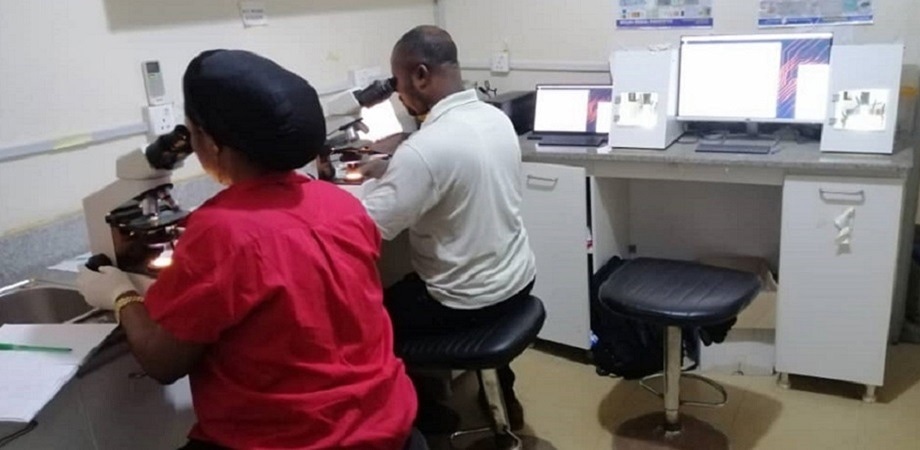Across the globe, schistosomiasis is considered a parasitic disease affecting millions and it poses a considerable public health and economic burden, especially in impoverished regions.

Microscopy is the WHO reference standard for the diagnosis of schistosomiasis. Toward the development of field-adaptable, rapid, and easy-to-use automated diagnosis, samples obtained from field settings in Nigeria were captured using the Schistoscope device, then experts manually annotated the images to create the S. haematobium dataset. Image Credit: Brice Meulah
For this disease to be combatted and also achieve the aim of the World Health Organization (WHO) for control and elimination, precise and accessible diagnostic tools are necessary. At present, microscopy is known to be the standard for diagnosing schistosomiasis, but it is tedious, operator-dependent, and needs specialized expertise, thereby making it hard for resource-limited areas.
For such difficulties to be addressed, scientists came up with the Schistoscope, an innovative optical tool fitted with an automated autofocusing slide scanning system. This device has microscopy images of urine samples, thereby allowing effective detection of Schistosoma haematobium eggs, a general cause of urogenital schistosomiasis.
In a study published in the Journal of Medical Imaging, the scientists aimed to make a strong dataset and come up with a two-stage diagnostic framework utilizing deep learning to precisely determine and count S. haematobium (SH) eggs in field settings.
Initially, the scientists made an SH dataset comprising 12,051 images of urine samples gathered in a rural area in central Nigeria and captured utilizing the Schistoscope device. They manually annotated the images, thereby marking the eggs and differentiating them from artifacts like glass debris, crystals, air bubbles, and fibers, which could curb precise diagnosis.
The suggested two-stage diagnostic framework comprises a DeepLabv3 with a MobilenetV3 backbone deep convolutional neural network, trained utilizing transfer learning on the SH dataset.
In the initial stage, the framework executes semantic segmentation to determine candidate SH eggs in the captured images. The second stage clarifies the segmentation by fitting overlapping ellipses, efficiently isolating boundaries of clustered eggs, resulting in more precise egg counts.
To illustrate the field applicability of the suggested framework, the scientists implemented it on an edge AI system (Raspberry Pi + Coral USB accelerator) and tested it on 65 clinical urine samples obtained in a field setting in Nigeria.
The study outcomes displayed high sensitivity, specificity, and precision (percentages: 93.75, 93.94, and 93.75, respectively), with the automated egg count that has been closely correlated to the manual count by an expert microscopist.
This SH dataset acts as a useful resource for training and assessing the diagnostic framework, thereby offering a varied set of images with different degrees of difficulty due to artifacts.
By automating the egg detection process, the Schistoscope and the proposed diagnostic framework offer a promising solution for the rapid and accurate diagnosis of urogenital schistosomiasis, particularly in low-resource settings.
Jan Carel Diehl, Study Corresponding Author and Professor, Department of Sustainable Design Engineering, Delft University of Technology
Diehl added, “Future studies will further validate the framework's performance and compare it with other diagnostic methods, such as schistosome circulating antigen detection and DNA-based assays, to establish its role in schistosomiasis monitoring and control.”
On the whole, this work represents a considerable step towards enhancing diagnostics and combating schistosomiasis, a disease that disproportionately impacts vulnerable populations in endemic regions.
Journal Reference
Oyibo, P., et al. (2023) Two-stage automated diagnosis framework for urogenital schistosomiasis in microscopy images from low-resource settings. Journal of Medical Imaging. doi.org/10.1117/1.JMI.10.4.044005.